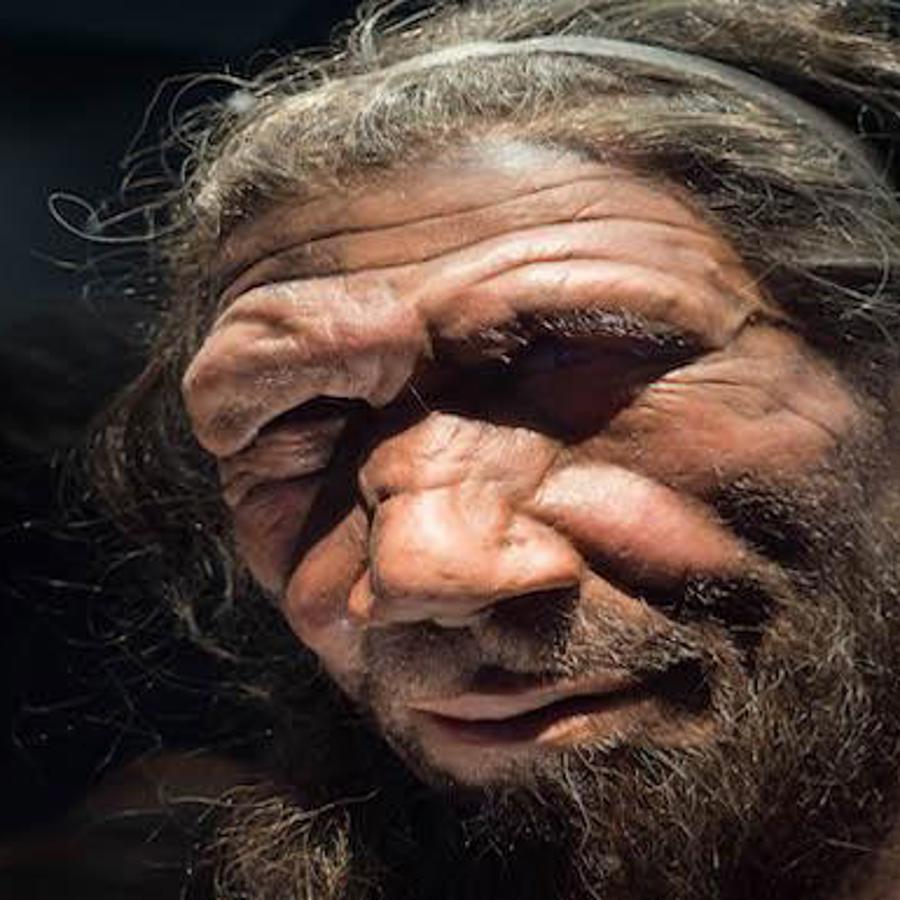
How can humans range from 0-4% Neanderthal DNA, if we're only 1.2% different from chimpanzees?
July 23, 2014

- Related Topics:
- Ancestry,
- Neanderthals,
- Genomics,
- Recombination,
- Bioinformatics,
- Human evolution
A graduate student from the United Kingdom asks:
"I understand that everybody except sub-Saharan Africans has 2 to 4% Neanderthal genes. So they differ from pure Africans by this large amount. We differ from chimpanzees by 1.2%. How can this possibly be?"
Obviously all humans are more alike to each other than they are to chimpanzees. And we are all more similar to Neanderthals than we are to chimpanzees as well.
The confusion comes from how percentages are used in different places. What the 2-4% refers to is how much DNA is 100% identical to Neanderthal DNA.
In other words, if a person shares "2% DNA with Neanderthals", that is really saying that 2% of that person's DNA is a perfect match to Neanderthals. Those areas are 100% fully identical. The rest of that person's DNA will still be pretty similar to Neanderthals, since we're so closely related to them. Those parts of the DNA will be about 99.7% similar.
The identical bits came about because some anatomically modern humans intermixed with Neanderthals. And since Neanderthals lived in Eurasia, this only happened in groups that migrated out of Africa. So if you have 4% Neanderthal DNA, that means you have a distant Neanderthal ancestor or two!
Most African people don’t have direct Neanderthal ancestry, and don’t have any regions of DNA that are perfect matches to Neandertals. But a sub-Saharan African will still be 99.7% the same as a Neanderthal overall.
When you combine all of that together, someone with 2-4% Neanderthal DNA is only about 0.006% different from someone who has zero Neanderthal DNA.
People of different “races” aren’t actually very different from each other in terms of DNA. There are more differences between people of the same race than there are overall differences between different races (Click here for more on this.)
For the rest of this answer, I’ll go a little more into what the 2-4% Neanderthal ancestry number means and how scientists figured it out. Then I’ll go a little more into what the 1.2% difference between humans and chimpanzees means.
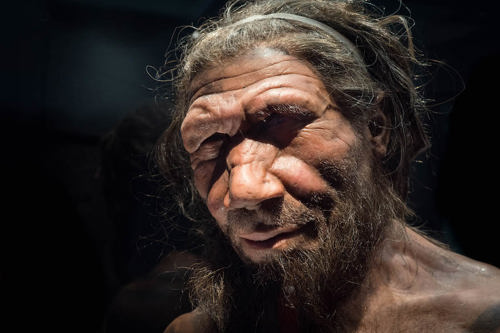
Recombination and Ancestry
When scientists compare Neanderthal DNA with various modern human DNA, they can actually see short stretches of the Neanderthal DNA in non-African DNA. They can see this because of the way in which DNA is passed down from parents to a child.
Human DNA is split into 23 long pieces called chromosomes. Every person has two copies of each chromosome. When parents have a child, the child gets one copy of each chromosome from the mom and one from the dad.
However, the copy of a chromosome that a child gets from a parent isn’t exactly the same as either copy from the parent. In the process of passing down one set of chromosomes, pieces of each copy of a chromosome get mixed together to form a chromosome that is a mixture of the original two. This mixing is called recombination and looks something like this:
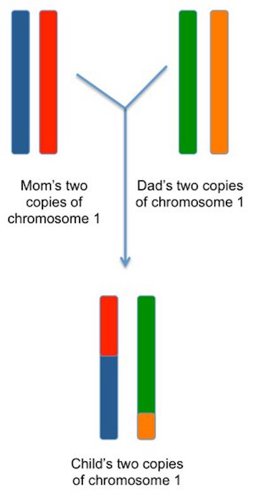
You can see in the image that recombination only happens at a few spots on the DNA. This means that long stretches of a child’s DNA will have come from a particular chromosome from either mom or dad. Those entire stretches of DNA will be 100% identical to part of mom or dad’s DNA.
When that child grows up and has her own children, the DNA of the mom and dad will get mixed a bit more before being passed on to the grandchildren. That means that the grandchildren will have shorter stretches of DNA that are 100% identical to their grandparents, as you can see in this image:
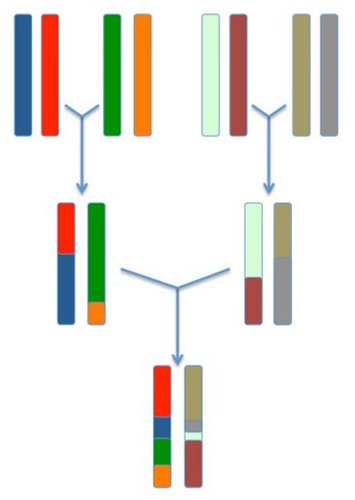
Scientists can use long stretches of DNA that are 100% similar between people to estimate how related they are. If 25% of your DNA is exactly the same as someone else’s, then that other person is an aunt, uncle, half sibling or grandparent! And if only 2% is identical, then that person is a distant cousin.
For figuring out what parts of a modern human’s genome came from Neanderthals, scientists look for what stretches of DNA in the person’s genome are exactly identical to a stretch of Neanderthal genome (or at least as identical as possible after tens of thousands of years). The 2-4% figure is the total amount of DNA in a person that comes from a stretch of DNA that is exactly identical to a stretch of Neanderthal DNA.
That 2-4% won’t be the same for every non-African person. It will depend on who your Neanderthal ancestor was and exactly how their DNA got mixed up with human DNA in all of your ancestors.
DNA Similarity Between Species
Humans and chimpanzees are separated by hundreds of thousands of generations of DNA. This means that you wouldn’t expect to see any long stretches of DNA that came from a particular chimpanzee.
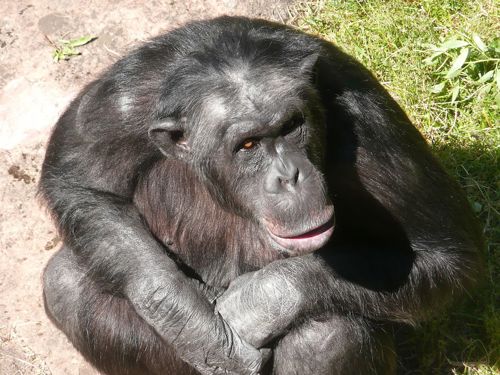
The 98.8% similarity number referred to in the question is how many individual DNA letters in the chimp genome are different from the DNA letters in a similar position in the human genome. So at this level, chimpanzees and humans are 98.8% the same while Neanderthals and humans are 99.7% the same.
You might read some places that chimps are only 95% similar. The difference in numbers comes from whether you include big sections of DNA that are completely different between the species in the comparison. For parts of the genome that are mostly similar, 98.8% of the letters will be identical, but there are some stretches of DNA that are only present in one of the two species.
These seemingly small differences in DNA lead to big differences between chimps and humans because they’re scattered across many, many genes. Even a few changes in one gene can have big effects on an animal. Spread that out over a whole genome and you get a chimp instead of a human.
Read More:
- How are siblings 50% alike, if humans are 85% the same as mice?
- How are siblings 50% alike, if humans and chimpanzees share 99% of their DNA?
- Does red hair come from Neanderthals?
- Does Neanderthal DNA benefit us today?
- Are men and women more genetically different than humans and chimpanzees?
- KQED: Neanderthal isn't the only ancient DNA not found in Africans

Author: Alicia Schep
When this answer was published in 2014, Alicia was a Ph.D. candidate in the Department of Genetics, studying the role of nucleosome positioning in gene regulation in Will Greenleaf’s laboratory. She wrote this answer while participating in the Stanford at The Tech program.
 Skip Navigation
Skip Navigation
